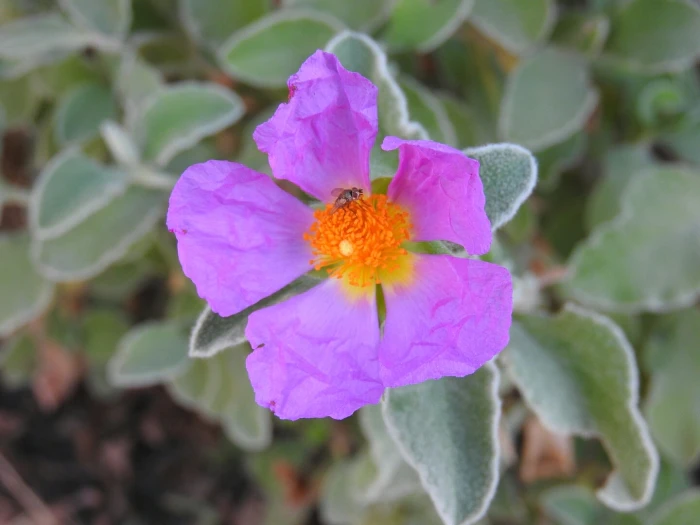Hairy Rockrose
(Cistus creticus subsp. eriocephalus)
Hairy Rockrose (Cistus creticus subsp. eriocephalus)
/
/

Francesco Cecere
Public Domain
Image By:
Francesco Cecere
Recorded By:
Copyright:
Public Domain
Copyright Notice:
Photo by: Francesco Cecere | License Type: Public Domain | License URL: http://creativecommons.org/publicdomain/zero/1.0/ | Rights Holder: Francesco Cecere | Publisher: iNaturalist | Date Created: 2016-07-11T07:53:06Z |
















Estimated Native Range
Climate Requirements for Salem, Oregon
| This Plant | Your Site | Plant Suitability for Your Location | ||
|---|---|---|---|---|
| • Precipitation | 7" - 64" | 40" | Aquatic | Aquatic |
| • High Temp. | 24°F - 94°F | 82°F | Your summer temperatures are normal for this plant. | Excellent |
| • Low Temp. | 20°F - 48°F | 34°F | Your winter temperatures are normal for this plant | Excellent |
This plant may not grow well at your location - your precipitation is too high.
Summary
Cistus creticus subsp. eriocephalus, commonly known as Hairy Rockrose, is an evergreen subshrub or shrub native to the Mediterranean region, including the islands and coastal areas, where it thrives in maquis and garigue habitats, as well as on rocky hillsides. It typically grows to a height of 1-4 feet (0.3-1.2 meters) and a width of 2-4 feet (0.6-1.2 meters), with a dense, mound-like form. The Hairy Rockrose is named for its hairy leaves, which are adapted to reduce water loss in its dry native environment. It produces showy pink flowers with yellow stamens in the spring and summer, which are particularly attractive to pollinators.
This plant is valued for its drought tolerance and ability to thrive in poor soils, making it an excellent choice for xeriscaping and Mediterranean-style gardens. It is also used for erosion control on slopes and banks. Hairy Rockrose requires minimal maintenance once established, and its aromatic foliage and flowers add sensory appeal to the garden. It is best grown in full sun and well-drained soils, and it is tolerant of maritime exposure. While generally pest-free, it can be susceptible to root rot if overwatered or planted in poorly drained soils.CC BY-SA 4.0
This plant is valued for its drought tolerance and ability to thrive in poor soils, making it an excellent choice for xeriscaping and Mediterranean-style gardens. It is also used for erosion control on slopes and banks. Hairy Rockrose requires minimal maintenance once established, and its aromatic foliage and flowers add sensory appeal to the garden. It is best grown in full sun and well-drained soils, and it is tolerant of maritime exposure. While generally pest-free, it can be susceptible to root rot if overwatered or planted in poorly drained soils.CC BY-SA 4.0
Plant Description
- Plant Type: Subshrub, Shrub
- Height: 1-4 feet
- Width: 2-4 feet
- Growth Rate: Moderate
- Flower Color: Pink
- Flowering Season: Spring, Summer
- Leaf Retention: Evergreen
Growth Requirements
- Sun: Full Sun
- Water: Low
- Drainage: Medium, Fast
Common Uses
Bee Garden, Bird Garden, Butterfly Garden, Drought Tolerant, Fragrant, Groundcover, Low Maintenance, Showy Flowers
Natural Habitat
Native to maquis and garigue habitats, and rocky hillsides in the Mediterranean region
Other Names
Common Names:
Scientific Names: Cistus creticus subsp. eriocephalus, Cistus creticus var. eriocephalus, Cistus sennenianus, Cistus eriocephalus, Cistus incanus var. villosus, Cistus villosus var. mauritanicus, Cistus villosus var. eriocephalus, Cistus polymorphus f. incanus
GBIF Accepted Name: Cistus creticus subsp. eriocephalus (Viv.) Greuter & Burdet